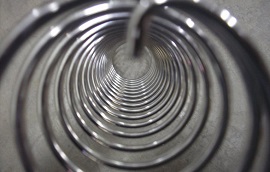Many of us consider air conditioning to be a modern convenience that is easily taken for granted. This is all very well when the unit is working correctly, but if one part fails it can cause problems that can leave you feeling the heat. Many consumers become a little overwhelmed when talking about air conditioning repairs as they don’t know anything about the components that are involved in the cooling process. So, here is a basic guide, so you have all the details you need to make informed decisions.
The Cooling Process:
Air conditioning systems use the principles of thermal energy to cool our homes. This is based on the principle that heat gravitates to cooler temperatures. Air conditioners use refrigerant compounds, moving around a closed loop to repeatedly expand and contract in gas and liquid states to release and absorb heat. When the refrigerant is evaporated into a gas state, it absorbs the heat inside your home, transferring it outside. Warm air is pulled through the ductwork to meet this cooling loop. This process requires both an indoor and outdoor unit, but here we will focus on the components of the cooling process that are located inside your home.
The Ducts:
The network of ducts is easily the largest component of your air conditioning system. It is needed to distribute and release cooled air into the individual spaces within your property. Your system also needs additional ductwork in order to remove stale air to be pulled back for reconditioning. The air is moved in either direction by blowers that are usually electric and are sized to ensure that they can adequately handle the volume of air.
Your ducts will be sized according to the dimensions of your building and the volume of air needed. In order to optimize efficiency, large trucks of ductwork usually distribute central lines, while smaller lines are used to reach further out. Return air is generally taken from any common areas. The ducts also require vented grates that are placed into the floors, walls or a dropped ceiling. This network can be used for cooling and heating the property using a forced air heating system for maximum efficiency.
The refrigerant needed to cool the property is enclosed by a loop. This loop allows it to be expanded and contracted between a liquid and gas state, and back again. In order to be changed into the heat absorbing gas, the refrigerant is passed through evaporating coils. This is an intricate set of delicate fins that meet the ductwork in order to regenerate conditioned air.
The amount of liquid refrigerant allowed into the evaporator coil is controlled by an exchange valve. This is a delicate balance as if there is too much refrigerant, there will be no room for expansion, and it will fail to attract heat. If there is too little refrigerant, efficiency will be compromised. For this reason, if your refrigerant level has been compromised by a leak or other issue, the underlying issue needs to be resolved by an experienced professional before the level is corrected.

